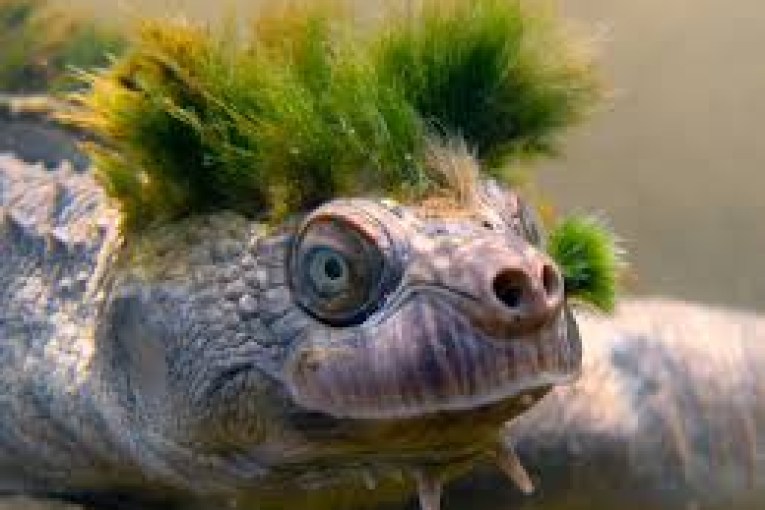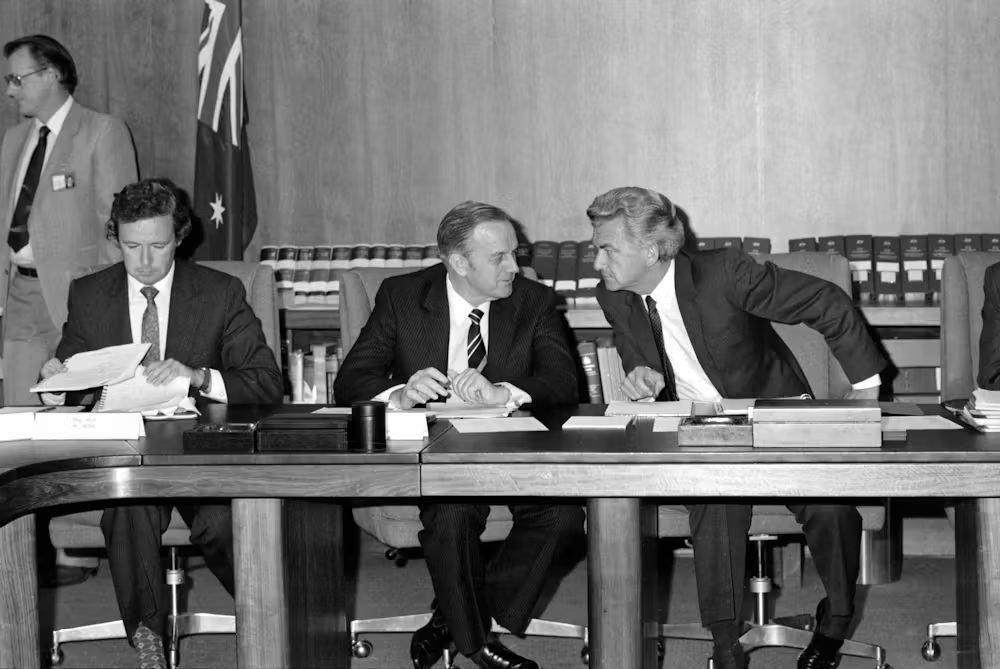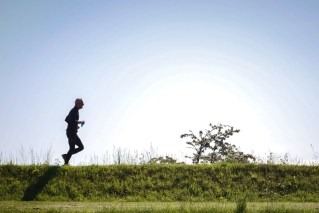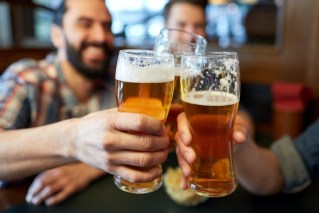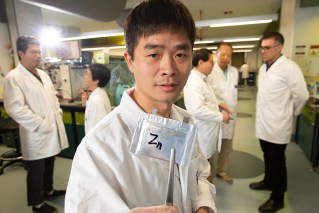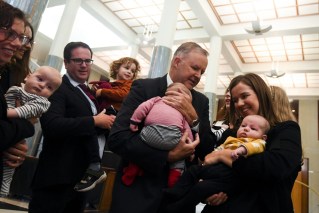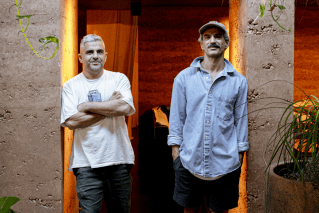Back to Ballymore – no Pringle sweaters this time, but it may just awaken those glorious ghosts of rugby
Ballymore, the spiritual home of Queensland Rugby (and some would say world rugby) has sprung back to life on the heels of a visionary refurbishment that promises to rekindle the code’s golden age. As Michael Blucher writes, it has a lot to live up to

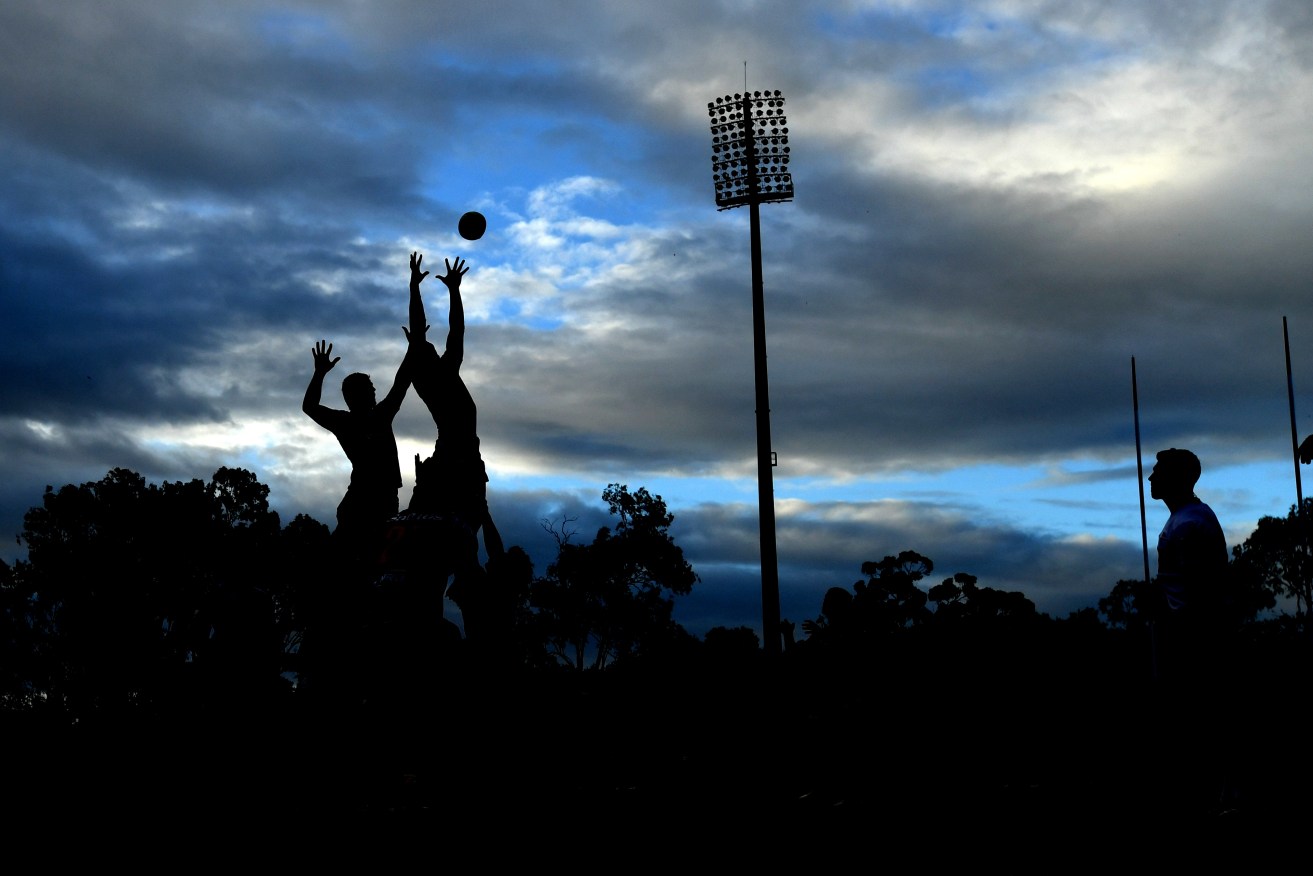
Players are seen during the line-out during a Super Rugby trial match between the Queensland Reds and the Western Force at Ballymore Stadium in Brisbane, Saturday, February 5, 2022. (AAP Image/Darren England) NO ARCHIVING, EDITORIAL USE ONLY
If you attended a private school in Brisbane the late 70s and early 80s, and had at least a passing interest in rugby, the chances are most Sunday afternoons in winter you’d find yourself in the can bar behind the grandstand at Ballymore.
Equally likely, you’d be wearing a chambray shirt and have red v-necked Pringle sweater tied in a knot around your shoulders. And if your luck was running right, you’d probably be talking trash to an attractive blonde with her collar up , her hair tied back, and a string of pearls around her neck. Most predictably, a Kate or a Margo. In that era, there were a lot of Kates and Margos in the Bundy Bar, many of whom arrived at Ballymore well after the end of game. No interest in the first or the second half, but the “third half” – that was when a lot of late scoring was done and the goals were kicked.
Winding all the Tag Heuer watches forward, it was just as likely that you and a Kate-equivalent would leave the hallowed Herston ground totally “trolleyed”, occasionally in your own car, but more likely crammed in the overcrowded back seat of a total stranger’s vehicle. If there was no room in the back, sometimes you’d even climb into the boot, alighting blindly and obliviously 15 minutes later at the next venue – Bonaparte’s, City Rowers, Fridays, or for those a little more suburban, Cafe Neon or the “Cacco”.
How are we going so far? Have I missed any critically important detail?
We could also reflect quickly on the creek-bank BBQ’s, the car park boot parties, and up in the McLean Stand, the ill-designed corporate boxes, where local captains of industry and their guests feasted on hot crumbed seafood, cold canned beer and rum and cokes in plastic cups. So many vivid yet hazy memories – where do you stop?
For youthful Brisbane establishment, Ballymore was the winter equivalent of the “Broadie” beer garden in summer – as cozy and comfortable for some as it was intimidating and unwelcoming for others. Those who lived it, loved it, and those who didn’t, probably never understood what it was all about – amateurs on the field, professionals in the grandstand, many proudly reliving their own fleeting association with the game, dredging up schoolboy rugby memories with ever increasing inaccuracy. Nostalgia as they say, can be a seductive liar.
Of course in 1996, the amateur party petered out – the game went professional, as it clearly had to do to survive in the intensely competitive and rapidly changing landscape of elite sport.
Much to the chagrin of the old guard – the rusted on rugby types – Ballymore quickly became outdated and irrelevant.
For a few years, the administrators tried to paper over the cavernous cracks, but the truth was the ground was completely unsuitable as a modern day sports venue – in scale, in amenities, in access and egress. By the late 90s, public transport was essential – no-one was driving home trolleyed anymore, nor were uni students leaving their car parked on No 3 oval for three days, until they could be bothered to go back and collect it.
Patrons demanded comfort, as well as ease of access – Ballymore offered neither.
More significantly, international broadcasters, now paying millions for TV rights, needed access to technology, to infrastructure that Ballymore in its existing form simply couldn’t provide, regardless of how many cometic makeovers the venue underwent.
Across more than a decade, the 12.5 acre site became more and more of a white elephant, as well as eventually “light-less”, with flood waters inundating the grounds and frying the foundations of the floodlights that had been erected in 1992.
Beyond serving as the training and administrative headquarters of the Reds, the only sources of oxygen helping keep the wilting venue alive were a couple of short term soccer tenancies and the occasional round of club rugby.
Until now.
Some $31.5 million of state and federal government funding has completely transformed the iconic but outdated facility, and created high performance amenities comparable to any provincial sporting centre in Australia.
In keeping with modern trends, the primary beneficiary of the infrastructure spend will be female athletes – both the Wallaroos and Queensland Reds women’s team will be domiciled at Ballymore, though the men and the various academy squads (male and female) will also be full-time residents.
Having worked at the old Ballymore for almost a decade from the late 80s, through to 1996, I couldn’t help feeling a little envious.
For longer than I care to remember, my office was in a demountable building, hired for three months in 1987 as part of Ballymore’s hosting of the inaugural Rugby World Cup. I shared it with five coaching directors and four possums – 2, possibly 2.5 square metres per person/possum.
Seven years later, I graduated to working in the middle of a shag pile carpet corridor, in a musty room that led into the very bowels of the historic “McLean Stand”. Nearby, there were storeroom doors that were never opened, not on account of any trepidation, just because nobody had a key.
But crikey we had a good a time. And how good was the Queensland team? , The Wallabies….Noddy, Slats, Tommy “The Turtle” Lawton, Crowls, Squabba, Dave WIlson, and of course “Horan and Little” – they almost became one person. The sons every mother wanted to have. How gifted were they?
There was also a tall lanky kid called “Eales”. I remember super coach Connolly running him on for the first time in a provincial match in New Zealand – “Holy Shit… did you see that?” Knuckles squawked from the grandstand in “Wundy Wellingtun”. First impressions were strong impressions. Everlasting impressions. A future champion had been born.
Sorry – where were we? The new National Rugby Training Centre – AKA, NRTC. Yep – it’s a little different to what was there. Not a musty corridor or a locked storeroom to be found.
But what a sterling job they’ve done – the design, the functionality, the use of space and light – the architects haven’t missed a trick.
For obvious reasons, there’s a fierce focus on high performance, but hospitality and admin have also been generously accommodated. There’s even traces of commercial enterprise – “come back to Ballymore, let us host your function, your AGM, in the 77 seat auditorium – we’ve got every thing you need”. Even a cafe. Where was that back in 1991? We had mugs of International roast, until of course the boss, Terry Doyle paid us a visit. Doylie had a destructive habit of sitting on desks. Coffee cups.. look out! .
On my guided tour of the high performance facilities, I couldn’t help but think what what Knuckles, and before him Bob Templeton, might have made of the new “amenities” The 800sq metres of gymnasium space, the indoor sprinting track, the impossibly high ceilings to accomodate indoor line out practice, and of course, the sauna and the ice bath.
In Knuckles’ days at the helm, the players were still climbing up onto a step, into a wheelie bin full of ice. During Tempo’s coaching era, the only thing on ice was the post match beers, and perhaps occasionally, a strained hammy or a bruised elbow.
Yes, we’ve come along way. What’s pleasing is that the game’s long and proud history hasn’t been forgotten or discarded in the Buildcorp rebuild. The new grandstand is still named in honour of the remarkable McLean family, but well beyond that, in practically every room, along every wide airy corridor, there’s a “tip of the hat” to the past – great names, historic photos, honour boards, rugby memorabilia, recognising the contribution of those who played, but also those who for years worked tirelessly behind the scenes, creating the opportunities for the game, and individuals within it to prosper.
I’m guessing there’s more than a fair share of rugby diehards who are still hankering for a return of the “good old days”.
I’d encourage them to get back out Ballymore and take a look at what’s there now.
The chambray shirts and red Pringle sweaters may have disappeared, but the “new” rugby days promise to be just as good.
The Grand Final of the 2023 StoreLocal Hospital Cup will be held at Ballymore on 2.15pm Sunday, August 27 – the culmination of a full weekend of finals footy at Ballymore for all grades from Colts 3 to Premier Women. Semi finals begin this weekend at selected Premier Grade clubs, with Bond University playing Wests at Brothers Crosby Park in Albion tomorrow (Sat Aug 12), with the winner through to the Grand Final. Easts take on Brothers in the minor semi at Easts’ Bottomley Park on Sunday, with the winner playing the loser of the first final on Saturday August 19 at GPS’ Yoku Rd.
